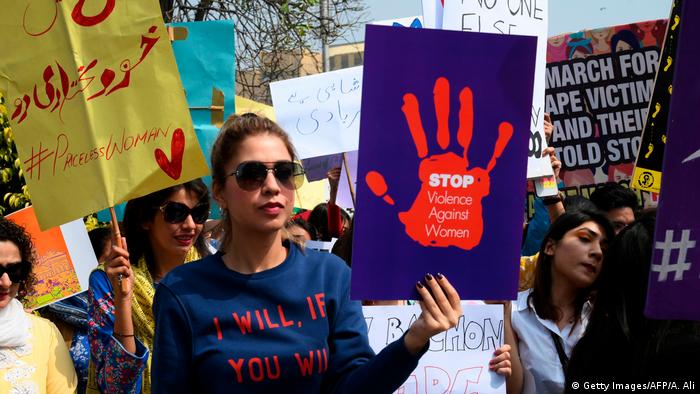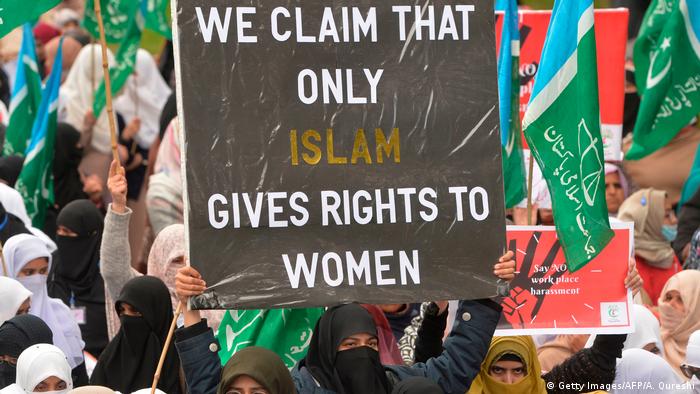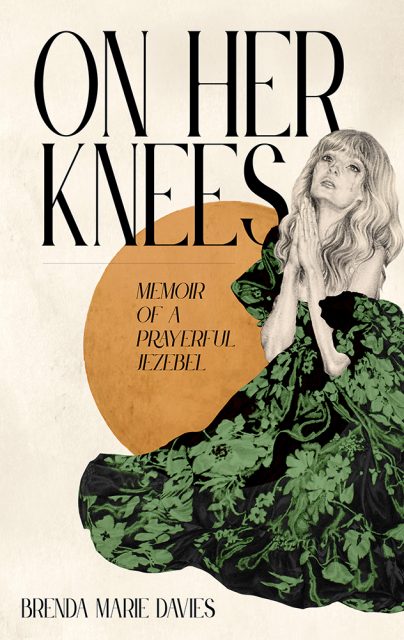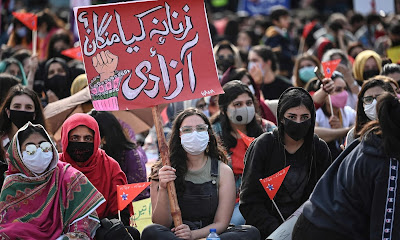If a mass shooter doesn't have an assault rifle, he can't kill a mass number of people. This is crucial. However, if we want to eliminate this problem altogether, we also need to focus on the deeper reasons of how these killers are created.
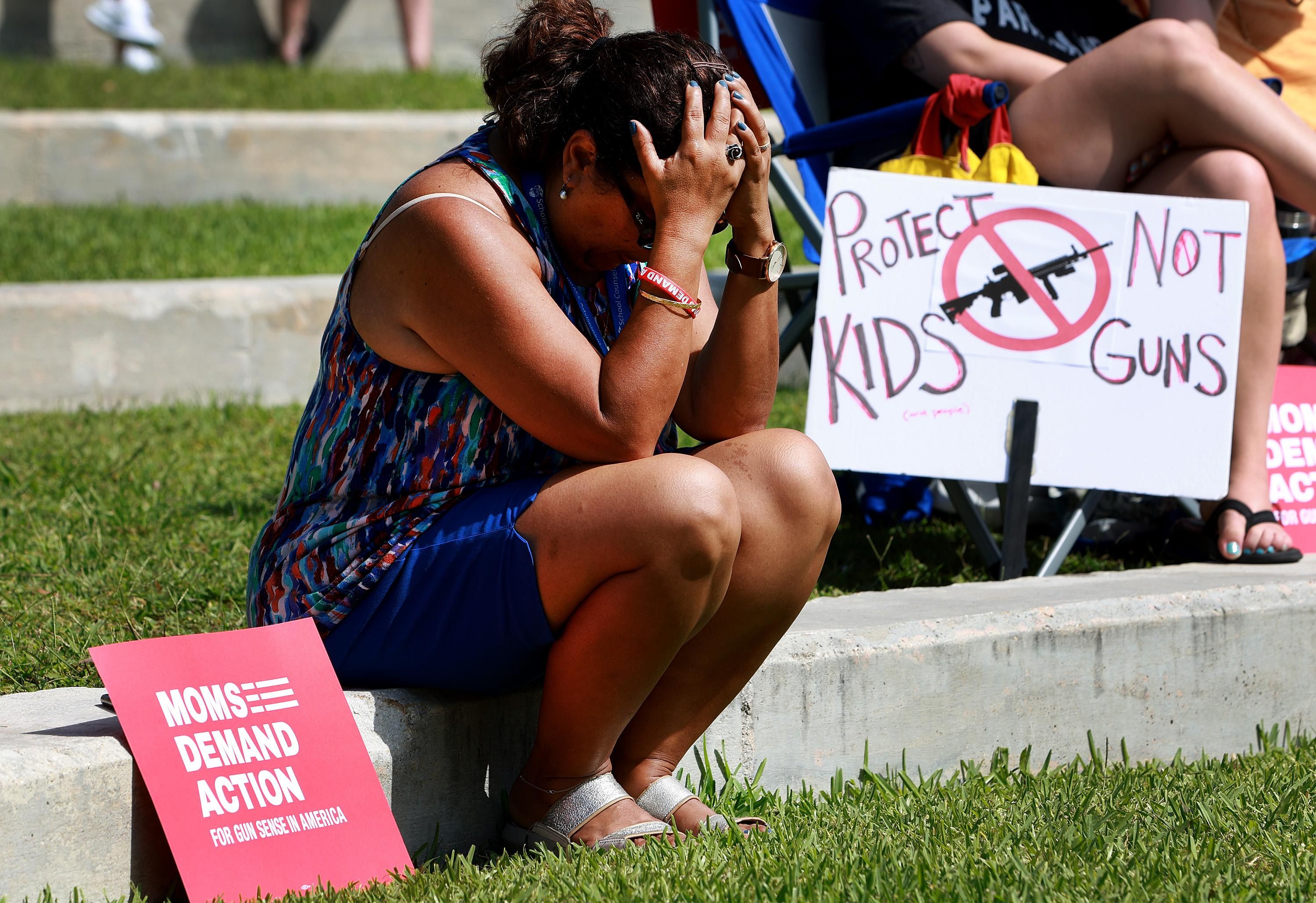
Tirza Clarke listens as the names of victims of recent mass shootings are read aloud during a vigil at the Sunrise Amphitheater on May 28, 2022 in Sunrise, Florida. Moms Demand Action, a national organization that works to prevent gun violence, held the vigil to mourn the victims of the mass shootings in Buffalo, New York, and Uvalde, Texas. (Photo: Joe Raedle/Getty Images)
REAGAN ROSS
In 2009, I wrote a short op-ed for The Oregonian on why men—and it is almost always men—become mass shooters. Re-reading the piece, I think it still holds up fairly well, though what is distressing is how 13 years later, we still find ourselves with this disturbing phenomenon. Considering the massacre of little children at Robb Elementary School and the Buffalo massacre, I felt compelled to re-visit my thoughts, amplify some key points. Most pointedly, like so many others, I am especially tormented by this recent atrocity, the killing of children aged 9 thru 11. Like how I felt about the Sandy Hook tragedy, I cannot fathom how such horrors can be inflicted on our children. And like so many others, I am with those who stress guns as the simplest way to ameliorate these mass shootings. Gun regulation is absolutely essential to at least cutting down on the number of mass shootings, legislation like background checks and assault rifle bans especially—obviously—key to keep weapons of war out of the hands of potential deranged killers.
Monsters Are Not Born, They Are Created
But, to my mind, as I touched on in that earlier piece—titled "Young mena and violence"—to truly end these horrors and to just create a safer society in general, we need to get at the root causes of what turns these people/kids into killers. After all, as I've said so many times to whomever will listen, monsters are not born, they are created. And if we want to stop them from being created, just subjecting them to our hate and/or punishing them is not enough. We must get at the root causes of what creates them and stop them from being created.
While there are many root causes to this complex issue, to my mind, the most crucial element are toxic masculinity ideologies that create toxic masculinity men. I've been researching masculinity for over twenty years, and it has become clear to me that toxic masculinity ideologies (compounded by other toxic ideologies—I'll come back to this in a moment) are a crucial root cause for what is to my mind a deeply unhealthy (toxic) masculinity in our culture.
Defining Toxic Masculinity
By toxic masculinity ideologies I'm referring to patriarchy, phallocentrism, and hypermasculinity. Patriarchy is a way of being that entails normalizing such toxic attributes as dominance, power, control, and authority/hierarchizing. Patriarchy is associated with paternalism or what psychoanalyst/theorist Jacques Lacan called "the law of the father," the belief that men—and it usually is men though not always (think Margaret Thatcher!)—are the inexorable authority figure, determining the choices and ways of being of Others. Patriarchal/toxic masculinity men believe that this is their entitled position in the world and when they don't get it, they feel aggrieved. Phallocentrism is defined by how we center and encourage phallic (masculine) power, the phallus being a symbol for masculine power and that which is used to reinforce and prove one's masculinity. Guns of course are the prototypical phallic symbol of masculine power. Hypermasculinity is defined as the suppression of attributes ideologically associated with the "feminine" and the accentuation of those attributes ideologically defined as "masculine," e.g., the suppression of emotion and other "feminine" attributes (empathy, sympathy, compassion, etc.), dominating Others (people of color, people of different nationalities/ethnicities, women, LGBTQ+ people, those deemed un-masculine or "weak," etc.), violence as a natural and necessary outlet and response, stressing "manly" (phallic) characteristics and behavior (showy displays of one's power and dominance, etc.) and so on. All the above are the ingredients for creating sociopaths; all told, toxic masculinity ideologies turn men into unempathetic sociopaths.
Of course, only a tiny percentage of such toxic masculinity sociopaths become mass killers, but the point is not that this is the singular root cause but rather that it is a crucial base ingredient. I would argue that all toxic masculinity men are sociopaths, they just exhibit that sociopathy in different ways. In short, the combination of a striving for power, dominance, control, and authority—the constant need to reinforce one's sense of a phallic masculine self—combined with a low degree or even zero degree of empathy and compassion for Others creates the conditions for sociopathy. We see this not only with these (mostly white) male mass shooters (and other destructive males) but also with the men who create the conditions for these mass shooters to exist, phallic men both keeping in place this unhealthy and dangerous hypermasculinity in men (be "manly," don't show emotions, exert your authority, don't seek help for mental health issues, etc.) and giving such men an outlet to constantly reinforce their never ending need to reinforce their masculinity, whether that be in the form of phallic guns or seeing other people as Others. In terms of latter, toxic masculinity men have always needed an Other to differentiate the self, people of color, women, LGBTQ+ people, Jewish people, etc. existing for them to constantly give them an Other that distinguishes their self as superior, the feeling and expression of "superiority" itself registering for them their sense of their own phallic (masculine) power. (I'm not specifically focusing on this element here but when toxic masculinity and white supremacy/xenophobia/LGBTQphobia/misogyny/anti-Semitism are combined we get yet another root cause for many of these mass shootings, the Buffalo mass shooting being the latest example.)
Compounding Toxic Ideologies
I should just touch on here a compounding element in this toxic stew, other toxic ideologies. Capitalism especially exacerbates toxic masculinity ideologies. In short, capitalism is a mercenary, predatory, survival of the fittest economic system/ideology and it breeds this way of being in people. Indeed, I would argue that capitalism is a patriarchy ideology, which is in part why it became the economic system/ideology of choice, since it too informs in so many ways toxic masculinity ways of being. One could even make the case that our most successful capitalists are successful because they must be sociopaths, their entire way of being living for constant and relentless—albeit unsustainable—profit increases and growth, which can only happen at the expense of Others and the planet, which are constantly dominated, controlled, and exploited. As I suggest above, other toxic ideologies also compound toxic masculinity ideologies, such as religious belief systems, white supremacy, and heteronormativity, all of which are Othering ideologies that potentially feed that need for toxic masculinity men to reinforce their sense of (superior) phallic power.
Of course, more pointedly, capitalism is also behind the drive by the NRA to keep assault rifles on the market, a key source of much of their profit and power. That, in turn, is why the NRA pours so much money into the coffers of politicians, mostly Republicans but some Democrats as well. Both the NRA and NRA owned politicians can't come out and say that, so they use toxic masculinity ideologies for their own self-interest, exploiting toxic masculinity ideologies in ways that feed toxic masculinity men's need for their phallic power, guns again being a key reinforcer but also just doing what right wingers have learned to do so well, create alternative realities (disinformation, conspiracy theories) that also feed into phallic drives that reinforce masculinity. We see this with the NRA's disinformation campaigns that Democrats wanting to ban assault rifles is just the first step to "taking your guns away." The many conspiracy theories on the dangers of our government all are based on the tried and true tactics of using fear, hatred, and rage to create a threat that needs to be engaged, the source of (white nationalist) militias and assault rifle ownership.
The Essential Need for Gun Safety
Bringing this back to mass shooters, the easiest response (or one would think!) to addressing this horrifying "new normal" we seem to have come to disturbingly accept is to just create stringent gun regulations, like so many other countries have done with success, especially in terms of banning these weapons of war (assault guns) and installing rigorous background checks. The common sense of this is incontrovertible: If a mass shooter doesn't have an assault rifle, he can't kill a mass number of people. For certain, that would cut way down on mass shooters, as it did during the time period that assault guns were actually banned in this country, from 1995 to 2004.
Making the Explicit Link to Mass Shooters
However, if we want to eliminate this problem altogether (and ameliorate other issues, such as the ever present threat of authoritarianism and fascism, which are direct toxic masculinity ideologies), we also need to focus on the root causes of these killers and that means understanding and addressing how these killers are created. The shooter who slaughtered our children at Robb Elementary purportedly had a speech impediment and was cruelly bullied when he was young, bullying also a symptom of our unhealthy toxic masculinity culture. He also apparently had a terrible home environment. Such an upbringing couldn't have but led to a thoroughly dysfunctional individual and untreated mental health issues. That doesn't mean of course that every such young person with mental illnesses will become a killer, but it does mean that many if not most toxic masculinity young men will have issues that left untreated could potentially lead to (self) destructive choices. That is, when young toxic masculinity men with mental illnesses grow up in a society permeated with toxic masculinity ideological indoctrination and messaging, that influence—that combination—can potentially lead to the most disturbing of (self) destructive choices.
More pointedly, like so many other young toxic masculinity males who are filled with a sense of victimization or lack of control—all of which for toxic masculinity males can only induce a feeling of emasculation—the Robb Elementary shooter chose to express that rage and hate in the only way that toxic masculinity men can, through acts of phallic violence. Most if not all shooters feel wronged or persecuted in some way and thus need to fight back in a way that gives them back a feeling of power and dominance and control—gives them back their sense of phallic power—mass shootings becoming one avenue to that end. Even the suicide aspect of this act could be seen as empowering, since this final act is part of their need to reassert control, not to mention that in their twisted minds, they can only see their heinous act as some glorious act of (phallic) retribution or pay back against a society that has caused them so much pain and suffering.
The Struggle for Fundamental Change Continues
In some ways, talking just about guns is an easy way out for well-intentioned (Democratic) politicians and pundits, since focusing on the real root causes—yes, toxic masculinity ideologies but also capitalism, consumerism, white supremacy/xenophobia, heteronormativity, misogyny—is challenging to say the least especially in terms of forcing us to confront aspects of ourselves that would necessitate real radical (progressive) change. But since the very politicians, pundits, and general populace who we need to enact such change are also deeply entwined in the very (toxic) ideological norms that we need to change, I'm afraid such changes mean a very long struggle indeed for those of us doing the heavy lifting of enacting such changes. Still, we have seen the beginnings of this radical change, both here in this country and around the world (for one thing, masculinity is getting healthier, especially with younger generations). And so even though this struggle to progress humanity to a more humanitarian way of being is long and hard and ongoing, it is happening and that becomes the impetus for all of us to never end the struggle for a better, healthier masculinity/humanity.
Our work is licensed under Creative Commons (CC BY-NC-ND 3.0). Feel free to republish and share widely.

REAGAN ROSS is an assistant professor at Montana State University. He teaches film and media studies, with a focus on gender studies and masculinity studies.










